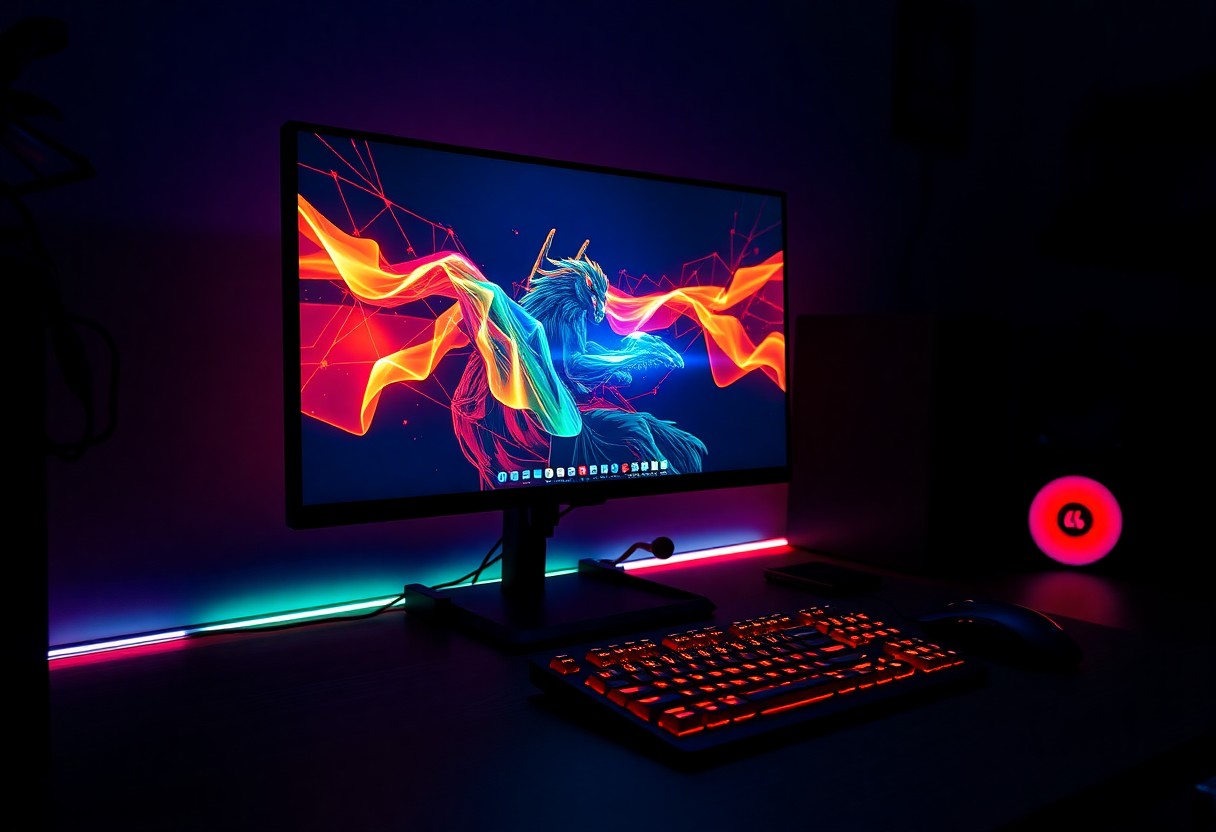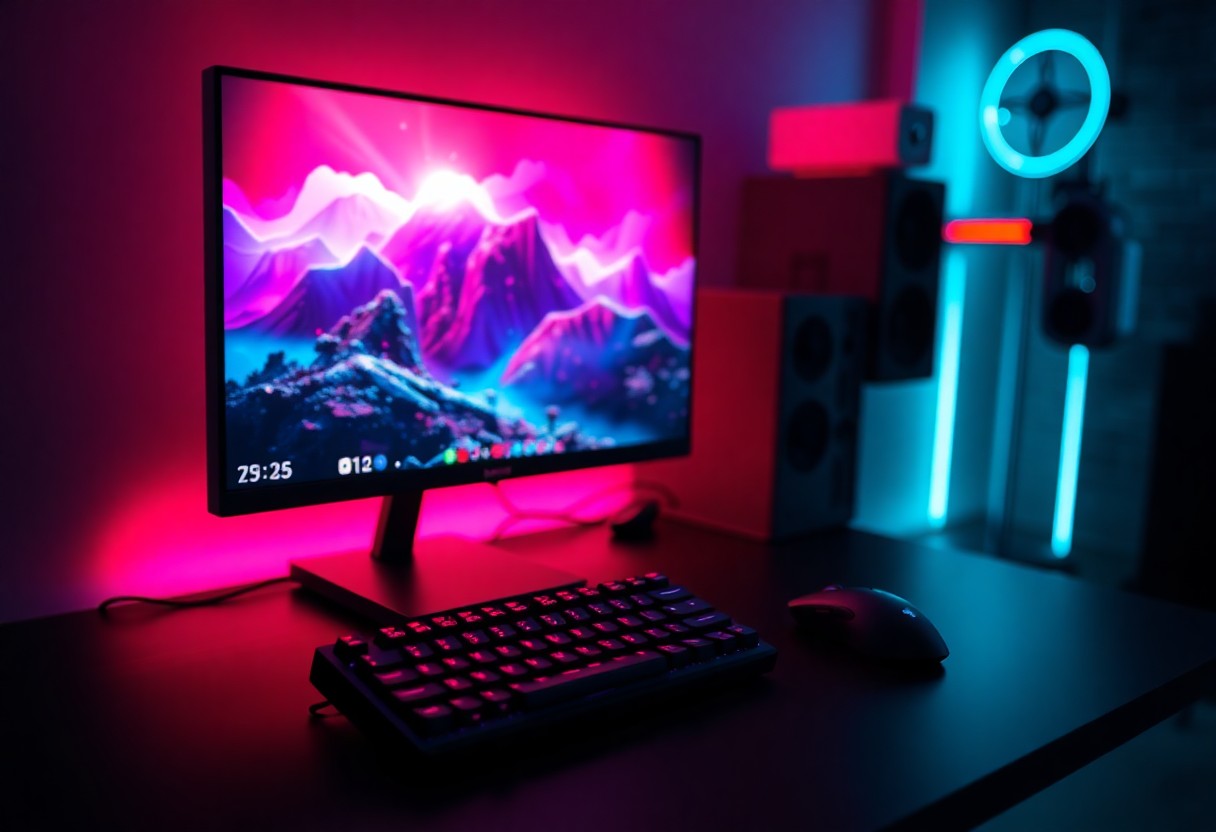The Ultimate Guide To Choosing The Perfect Gaming Monitor – How-to Tips
Overwhelmed by the array of gaming monitors available today? You’re not alone. Choosing the right one can significantly enhance your gaming experience, allowing you to fully immerse yourself in your favorite titles. This guide will equip you with crucial tips to help you evaluate important features like screen size, refresh rate, and response time, ensuring you make an informed decision that suits your gaming style. Get ready to elevate your gameplay and enjoy stunning visuals!
Contents
- Understanding Gaming Monitor Specifications
- Resolution: Choosing the Right Clarity
- Refresh Rate: The Key to Smooth Gameplay
- Response Time: Importance of Speed
- Panel Types and Their Characteristics
- IPS vs. TN vs. VA: Which is Best for You?
- Color Accuracy and Representation
- How to Assess Your Gaming Needs
- Types of Games and Their Requirements
- Gaming Setup: Space and Compatibility Considerations
- Additional Features to Look For
- Adaptive Sync Technologies
- Connectivity Options: Ports That Matter
- Tips for Budgeting Your Monitor Purchase
- Balancing Features and Price
- Identifying Value Deals and Discounts
- How to Properly Set Up Your Gaming Monitor
- Ideal Configuration for Optimal Performance
- Calibration for the Best Visual Experience
- To wrap up
Understanding Gaming Monitor Specifications
To select the finest gaming monitor, it is crucial to comprehend the various specifications that define performance and visual quality. From resolution to refresh rate and response time, each aspect plays a significant role in your overall gaming experience. Knowing these specifications will empower you to make an informed decision when choosing a monitor that best suits your gaming needs.
Resolution: Choosing the Right Clarity
Clearly, the resolution of your gaming monitor significantly impacts image quality. Higher resolutions, such as 1440p or 4K, provide more detail and clarity, enhancing the visual experience. However, ensure that your computer’s hardware can support these resolutions to avoid lag or performance issues during gameplay.
Refresh Rate: The Key to Smooth Gameplay
Assuming you want optimal performance during gaming, you should pay special attention to the refresh rate. A higher refresh rate, such as 144Hz or 240Hz, allows your monitor to display more frames per second, making gameplay smoother and more responsive. This is especially important for fast-paced games where quick reactions are necessary.
Specifications like refresh rate are vital in providing you with a seamless gaming experience. The refresh rate directly influences the fluidity of visuals, which means you can expect to see less motion blur and experience faster in-game reactions. Therefore, a monitor with a high refresh rate can give you a competitive edge, especially in multiplayer scenarios.
Response Time: Importance of Speed
Little do many gamers realize that response time plays a significant role in how quickly a monitor can change from one color to another. A lower response time (measured in milliseconds) reduces ghosting and blurring effects, allowing for precise movements during intense gaming sessions.
Monitor specifications based on response time can greatly impact gameplay. Think of this as the speed of your monitor in reacting to fast-moving images. A responsive monitor with a low response time will ensure smoother transitions and clearer visuals, especially in fast-paced games, enhancing your gaming performance while minimizing distractions that can obstruct your concentration.

Panel Types and Their Characteristics
One of the key factors in selecting a gaming monitor is understanding the different panel types and their unique characteristics. Each type offers distinct benefits and drawbacks:
| Panel Type | Characteristics |
| IPS | Wide viewing angles, vibrant colors |
| TN | Fast response times, lower color accuracy |
| VA | Deep blacks, good contrast ratios |
| OLED | Outstanding color accuracy, infinite contrast |
| Mini LED | Improved brightness and contrast |
Thou must choose wisely to match your gaming preferences with the appropriate panel type.
IPS vs. TN vs. VA: Which is Best for You?
Types of panels cater to different gaming desires, and knowing their strengths will help you decide. IPS panels shine in color reproduction and viewing angles—ideal for immersive experiences. In contrast, TN panels boast rapid response rates, making them popular for competitive gaming. VA panels can generate rich contrast and deeper blacks, enhancing cinematic experiences. Evaluate your gaming style and preferences to pinpoint the right choice for your setup.
Color Accuracy and Representation
Clearly, color accuracy is imperative for an immersive gaming experience. A monitor with superior color representation allows you to see the game as intended by the developers and enhances visual fidelity.
Best of all, investing in a monitor with excellent color accuracy can significantly elevate your gaming visuals. Look for monitors covering at least 95% sRGB and 100% Adobe RGB for true-to-life colors. If you enjoy graphic-oriented gaming or creative work, opting for >83% NTSC coverage will also provide you with more vibrant visuals. Choosing the right monitor for color representation ensures your gaming experiences are both stunning and true to the developer’s vision.
How to Assess Your Gaming Needs
After determining the right gaming monitor for you, it’s important to assess your gaming needs. Consider factors like your gaming style, preferred genres, and resolution preferences to make an informed choice. By taking the time to evaluate these aspects, you can find a monitor that enhances your gaming experience, ultimately leading to better performance and enjoyment.
Types of Games and Their Requirements
Now, when evaluating your gaming needs, different games come with varying requirements. Here’s a breakdown:
| Game Type | Monitor Requirement |
| First-Person Shooters | High refresh rates |
| RPGs | High resolution |
| Simulation Games | Wide color gamut |
| Racing Games | Quick response time |
| Multiplayer Online Games | Low input lag |
Thou must consider your games’ demands to select the monitor that best suits your gameplay style.
Gaming Setup: Space and Compatibility Considerations
Types of gaming setups can vary considerably based on your available space and hardware. When choosing a monitor, ensure that it fits comfortably in your designated gaming area and is compatible with your existing setup, including your graphics card and peripherals.
Compatibility is key when selecting the right monitor for your gaming setup. Consider the following aspects: the size of your space, the resolution supported by your graphics card, and the refresh rate your system can handle. Ensure your monitor connects with your current gaming setup through HDMI, DisplayPort, or even your gaming console. Also, picking a monitor that matches your gaming preferences could lead to a more fulfilling experience. Ultimately, don’t overlook the ergonomics of your setup, as a comfortable gaming environment contributes positively to your overall enjoyment.
Additional Features to Look For
Now that you have a grasp on the important specifications, it’s time to explore additional features that can enhance your gaming experience. Look for monitors with adjustable stands, built-in speakers, and customizable RGB lighting to match your gaming setup. Features like flicker-free technology and blue light filters can also help reduce eye strain during long gaming sessions, making your experience not just enjoyable but also healthier.
Adaptive Sync Technologies
Even if you’ve chosen a monitor with a high refresh rate, the gaming experience can be significantly impacted without adaptive sync technologies. These technologies, like AMD’s FreeSync or NVIDIA’s G-SYNC, help eliminate screen tearing and stuttering, synchronizing the monitor’s refresh rate with your graphics card’s output. This means smoother gameplay and improved responsiveness, which can be a game-changer in competitive gaming.
Connectivity Options: Ports That Matter
Any modern gaming monitor should come equipped with a variety of connectivity options to ensure compatibility with your gaming devices. Look for HDMI and DisplayPort inputs, as these are the most common for high-refresh-rate gaming. USB ports are also beneficial for connecting peripherals, while an audio jack can enhance your gaming audio experience.
Technologies such as HDMI 2.1 and DisplayPort 1.4 are important for achieving higher resolutions and refresh rates without compromising video quality. Ensure your monitor features multiple HDMI and DisplayPort inputs to accommodate various devices, including consoles and PCs. Additionally, having USB-C ports can greatly increase compatibility with modern laptops and peripherals. Prioritize a monitor that fits your connectivity needs to avoid frequent switch-outs and enjoy a seamless gaming experience.

Tips for Budgeting Your Monitor Purchase
Despite the temptation to splurge on the latest tech, setting a budget for your gaming monitor is important. Here are some tips to help you manage your spending:
- Determine your purpose and needs for the monitor
- Research average prices in your desired category
- Consider second-hand options or sales
- Factor in additional costs like stands or accessories
The right budget will guide your decision-making process.
Balancing Features and Price
Monitor prices vary greatly depending on the features they offer. When weighing options, assess which specifications—like refresh rates or resolutions—are truly important for your gaming style. By prioritizing these, you can find a model that does not compromise performance while remaining within your budget.
Identifying Value Deals and Discounts
Your search for the perfect gaming monitor can often lead you to special offers and promotions. Familiarize yourself with peak shopping periods, such as Black Friday, when discounts abound, and consider subscribing to retailer newsletters for exclusive sales. This proactive approach can significantly lower your expenses and help you grab a deal on top-tier monitors.
It’s advisable to keep an eye on multiple retailers for price comparisons and stay updated on seasonal sales events. You can also utilize price tracking websites that alert you when your desired monitor drops in price. Be cautious, as some deals might come with compromises on quality or warranty. Always double-check the specifications, read reviews, and verify that the discount reflects a genuine value deal rather than a marketing gimmick.
How to Properly Set Up Your Gaming Monitor
Many gamers often overlook the importance of a proper setup for their gaming monitor. Ensuring that your monitor is positioned correctly can significantly enhance your gaming experience, as it affects both comfort and performance. Start by adjusting the height, tilt, and distance to minimize glare and ensure an optimal line of sight. Additionally, consider cable management to keep your setup tidy and free from distractions, allowing you to focus solely on your gameplay.
Ideal Configuration for Optimal Performance
Your monitor’s settings play a vital role in achieving the best gaming experience. Set the resolution to match your monitor’s native specification, and adjust the refresh rate to the highest level supported by both your monitor and graphics card. Enabling features such as FreeSync or G-Sync can also smooth out gameplay and reduce tearing, making for a more responsive experience.
Calibration for the Best Visual Experience
There’s no denying that calibration can make a world of difference in your gaming visuals. Taking the time to adjust brightness, contrast, and color settings to suit your preferences will enhance the overall quality of your games, ensuring that you don’t miss out on vital details.
With the right tools and a keen eye, you can achieve an ideal calibration for your gaming monitor. Start by using built-in calibration features or third-party software to adjust brightness and contrast, while ensuring colors appear accurate and vibrant. Don’t overlook the Gamma setting, which can significantly impact the visibility of details in darker scenes. Lastly, regularly recalibrating your settings can ensure that your monitor continues to deliver the best possible visual experience as you look into new gaming adventures.
To wrap up
Ultimately, selecting the perfect gaming monitor requires careful consideration of factors like refresh rate, resolution, and panel type to match your gaming needs. By prioritizing your preferences and keeping an eye on important specifications, you can enhance your gaming experience significantly. Whether you are a casual gamer or a competitive player, the right monitor can make all the difference in your performance and enjoyment. Use this guide to inform your choice and elevate your gaming setup to new heights.